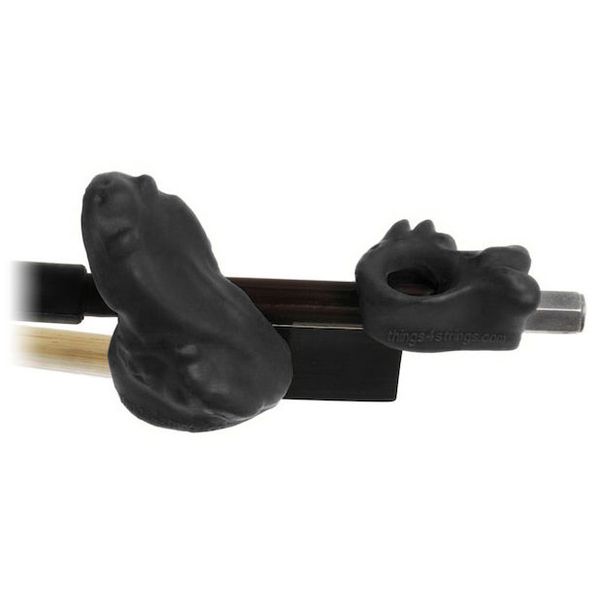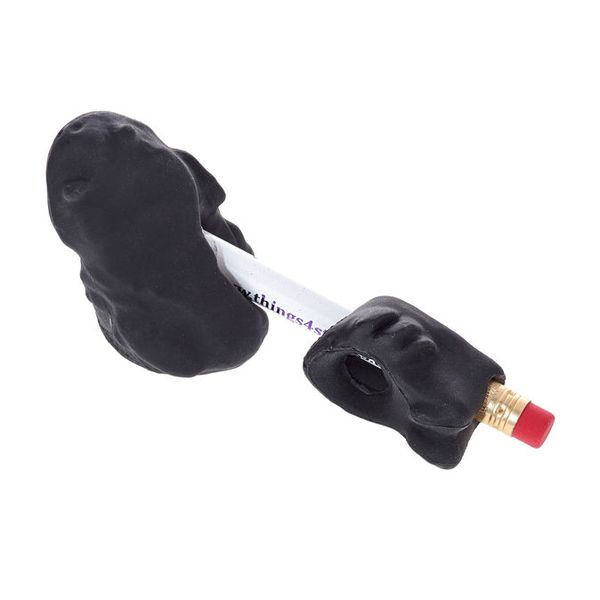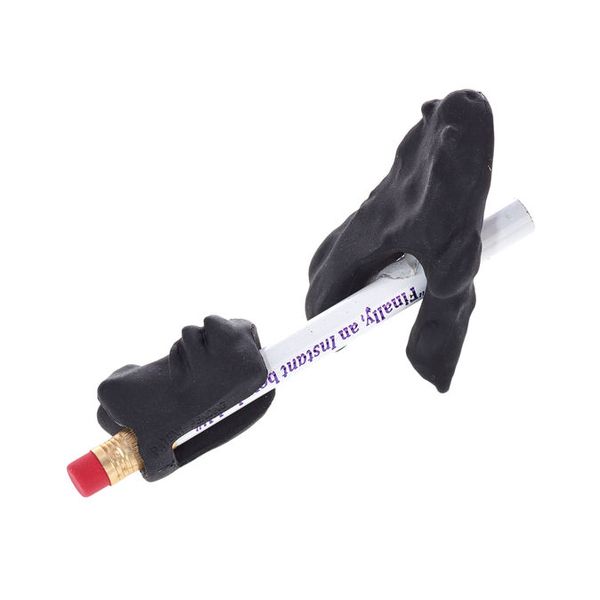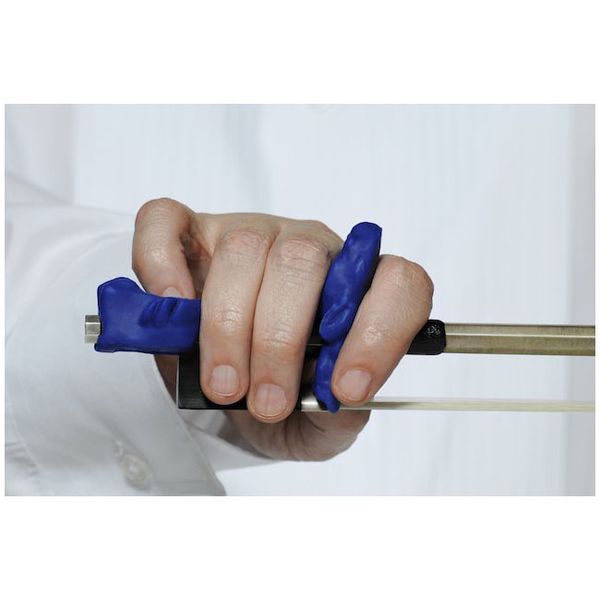Upon recommendation by a violin teacher we used the bow hold buddies on a 1/16th and later a 1/4th bow for a child. The child more easily adopted the correct bow hold than without the buddies, so they worked as advertised. We would make the fish buddy sing along out of tune whenever its mouth wasn't covered by the pinky, so there are fun ways to incorporate the buddies into practice without frustrating the child.
There are significant downsides, though:
- the frog end of the bow becomes much heavier when the frog buddy is installed. The fish buddy is light enough, but the frog buddy is solid and heavy enough to throw off the balance of the bow. The effect is that learning to balance the bow with the pinky is delayed for as long as the frog buddy is installed.
- the frog buddy is a little hard to install. Especially on small bows there isn't enough space between the frog and winding. On our 1/16th bow this eventually lead to damage to the winding.
- since installing the frog buddy is cumbersome, it is best to just leave it on the bow at all times. Unfortunately, it stands out too much from the bow, making it impossible to store the bow in a small violin case without having it touch the violin when the case is closed. We figured out a somewhat unorthodox orientation in the case to store the bow with the violin, but it seems to have increased wear on the bow hairs.
It seems to me that the frog buddy is much less important for a correct bow hold than the fish buddy, so in the future I'd only recommend using the fish buddy to guide the pinky.
Finally, a note on quality. Both buddies can be used for months, but they soon become a little loose, so they won't keep their position on the bow. This means that a teacher needs to prepare the bow to ensure that the bow hold buddies are in a comfortable position and don't accidentally encourage a detrimental posture.












